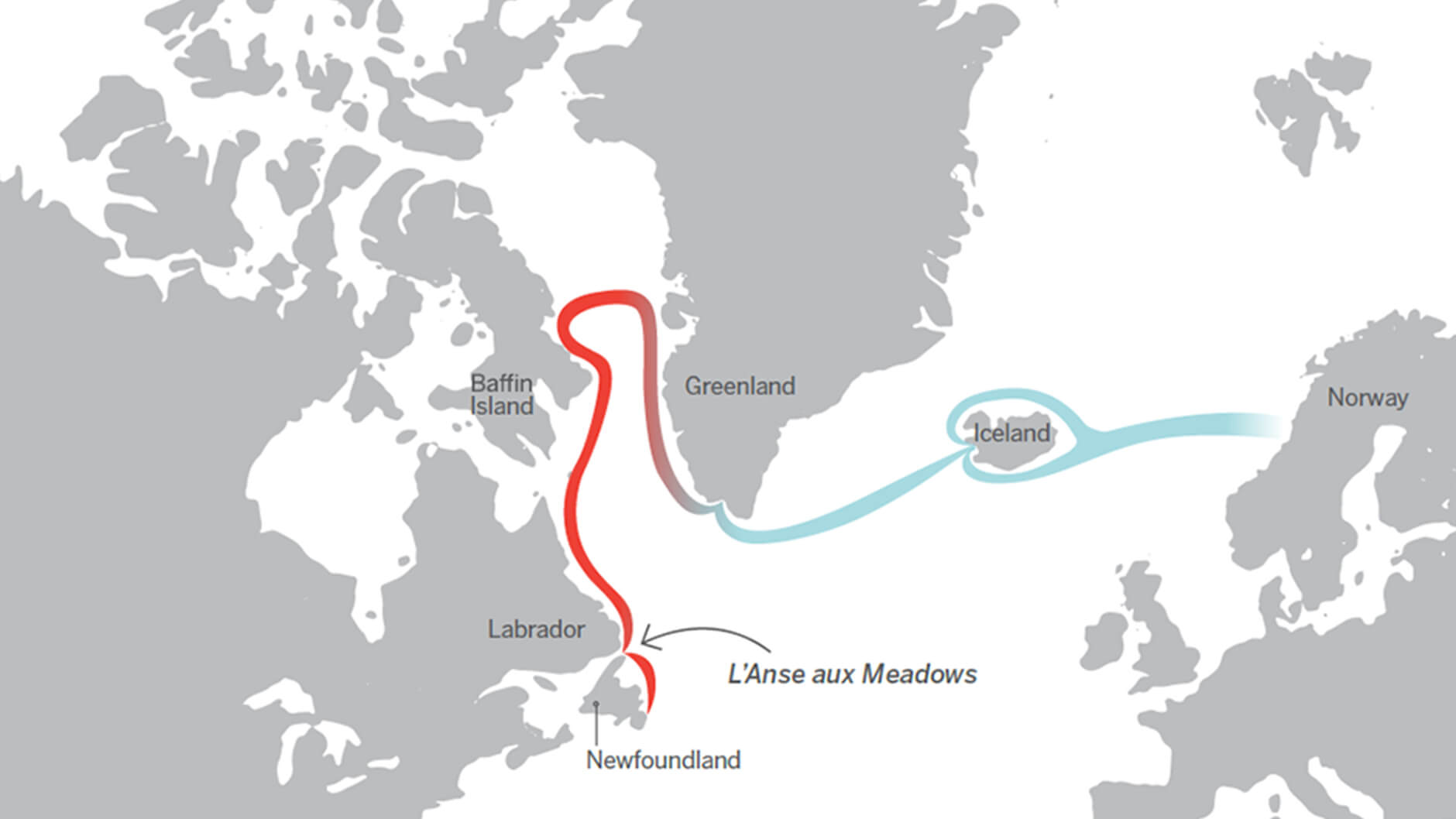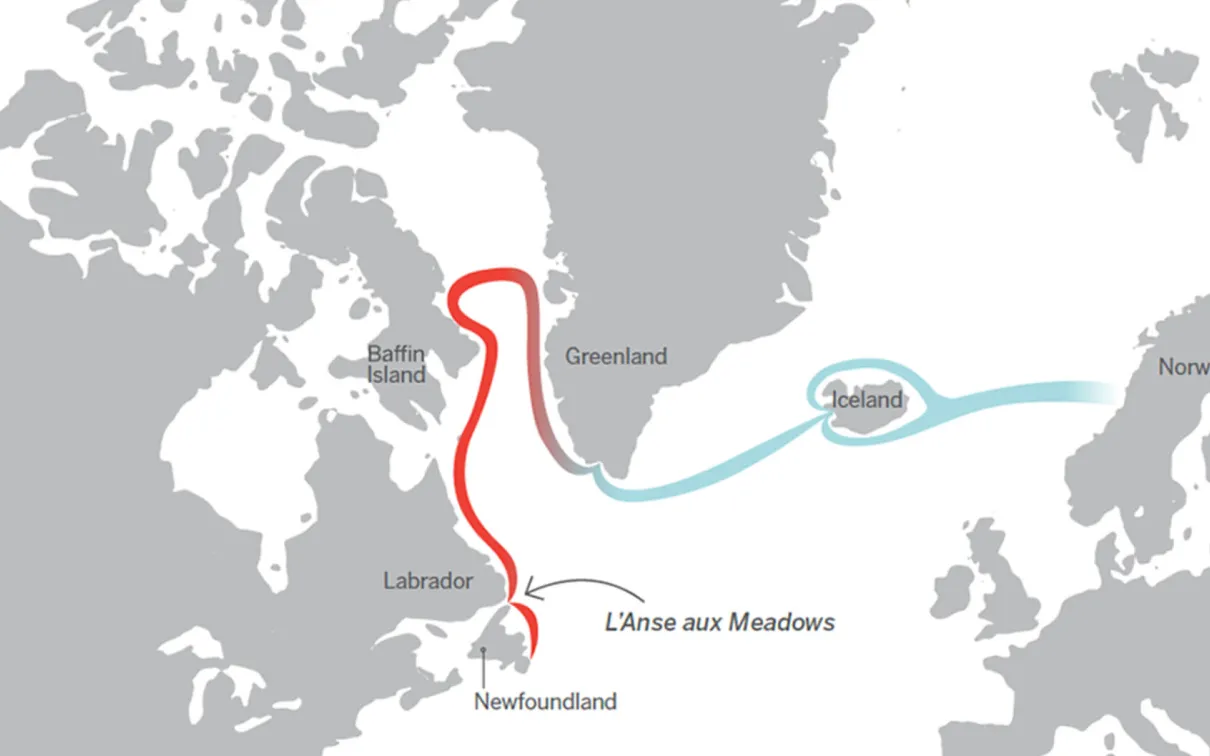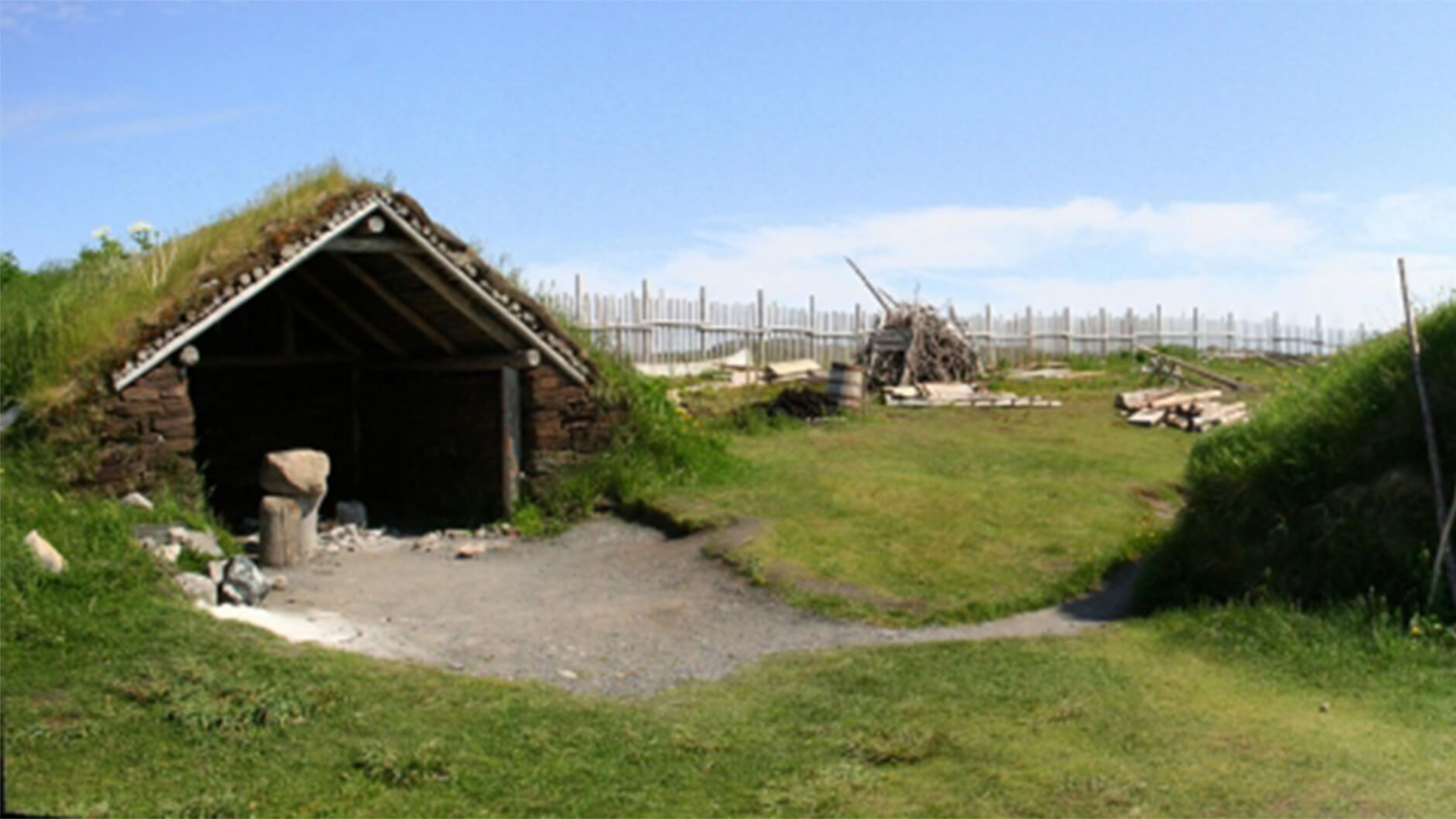Vikings in Canada
Norse arrival in Canada was the culmination of many decades of western expansion driven by a thirst for land and profit.
Published
Category
Author
Archaeological evidence shows
Archaeological evidence shows that in the early eleventh century CE, the Vikings arrived in Newfoundland and established a small encampment, known today as the UNESCO World Heritage Site L’Anse aux Meadows. The Norse Sagas—postdating the archaeological evidence by two centuries or more— recount multiple Norse explorations to current-day Canada. Taken together, the archaeological and written records of Canada’s Viking history provide valuable information on the trials and tribulations of settling and exploring what was yet another new frontier for the Norse.
The sagas recount several Norse expeditions into northeastern Canada. At least one of these was unintentional, when Bjarni Herjolfsson accidentally landed on the Canadian coast when attempting to sail from Iceland to Greenland. However, most were planned voyages, including the journey of Leif Eriksson. Inspired by Herjolfsson’s tale, he set sail from Greenland to explore this new land. His expedition delighted in the rich natural resources that they found, including salmon, timber, and even wild grapes. The latter inspired them to call this place Vinland (or “wine land”).
The Route to Canada
The Norse arrival in Canada was the culmination of many decades of western expansion driven by a thirst for land and profit. In the late ninth century CE, the Norse began establishing settlements in Iceland; in the tenth century they settled areas of Greenland. From there, Norse expeditions often sailed up the west coast of Greenland, across the Labrador Current to Baffin Island, and south along the shore of Labrador. The only unequivocal archaeological evidence for Norse settlement in this area is found at L’Anse aux Meadows in Newfoundland.
L’Anse aux Meadows
Announced in 1961 as the only firm archaeological evidence for Norse presence in Canada by the Norwegian writer and explorer Helge Ingstad, L’Anse aux Meadows was a small Norse encampment in Newfoundland. The site comprises the footprints of eight main structures, visible above the ground as a series of rectilinear grassy ridges. Initial archaeological excavations by Anne Stine Ingstad showed that the site was occupied by the Norse just over 1,000 years ago.
Norse Life in Canada
Historical information recounted in the sagas, combined with archaeological evidence indicates that the Norse stayed in North America only for relatively short periods of time. L’Anse aux Meadows served as a base settlement from which the Norse explored foreign landscapes in search of valuable natural resources. L’Anse aux Meadows was designed not as a self-sustaining colony but as a temporary home base and a gateway into unknown lands. Setting up sites like L’Anse aux Meadows allowed the Norse to double the amount of time each year that they could spend safely exploring Canada.
Trade and Interaction with First Peoples
Although at L’Anse aux Meadows it seems that the Norse never or rarely encountered First Peoples, the archaeological record shows long-term Indigenous presence in the area, both before and after the Norse occupation. Farther afield, on their explorations into other areas of Vinland, the Norse did encounter Indigenous peoples, whom they referred to as skraelings (a term they also used when referring to the Indigenous peoples of Greenland). The sagas portray these meetings in various ways, including descriptions of both amicable and violent encounters.
Craig Cipolla
Craig Cipolla is the Isabel and Gino Vettoretto Curator of North American Archaeology.








